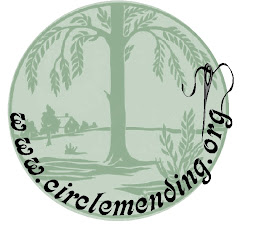February 25 about how to navigate the NARA on-line microfilm catalog (applicable to researchers in all geographic areas)
March 22 about the information documents for the NARA holdings (applicable to researchers in all geographic areas)
March 23 an overview of the Letters of Application and Recommendation during the Grant Administration
March 24 an example of one file in the Grant Administration collection
Our last examination was of a letter recommending Herman Haupt for a government position. Today we will look at a file for a lesser-known applicant, but one who might happen to be related to you (who knows?). If you have WENDT in your family tree, this may be of particular interest:
 Unfortunately, as we so often find in micro-productions, the 2 other papers that were with this were illegible. One was the "jacket" or "cover" for this document (giving just the name and date) and the other was a picture of the file folder that holds the original paperwork. Neither is crucial to the use of this letter and it is good to see that the document itself is in remarkably good (and legible) condition. Another downside of most of these letters is that they don't follow up on what happened next.
Unfortunately, as we so often find in micro-productions, the 2 other papers that were with this were illegible. One was the "jacket" or "cover" for this document (giving just the name and date) and the other was a picture of the file folder that holds the original paperwork. Neither is crucial to the use of this letter and it is good to see that the document itself is in remarkably good (and legible) condition. Another downside of most of these letters is that they don't follow up on what happened next.Did Mr. Wendt get the appointment in Vienna? If so, did he ever return to the United States? Did his family go with him? But consider this: If this WENDT is yours and you "lost" him around 1874 (whether or not you were able to locate him later), this might explain where he went and give further clues of places to search for more information! If he did not get the appointment, it still mentions to his native city (Vienna) and may give a researcher a valuable clue in locating baptismal and immigration records. This one letter could knock down a few significant WENDT walls.
So the question is this: is there a relative of yours that made application or wrote a letter to a presidential administration, or for whom a letter of recommendation was written? (Yes, I've checked for my ancestors, just in case . . . of course, there are none that I've located so far, but if you hit "pay dirt" I'd love to know!)
Reminder, how to search the catalog for information in this collection can be found at my earlier blog on March 22.
















